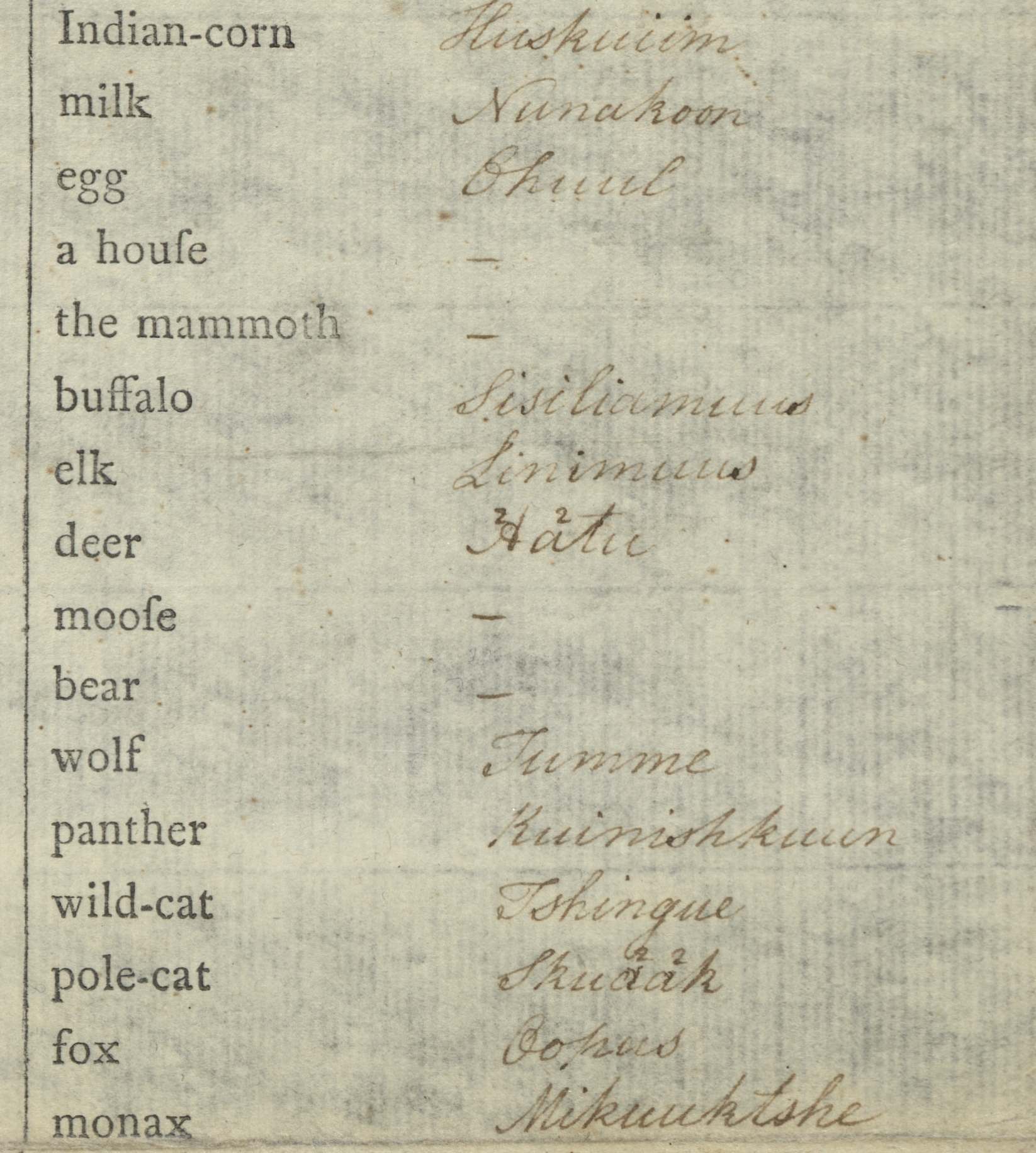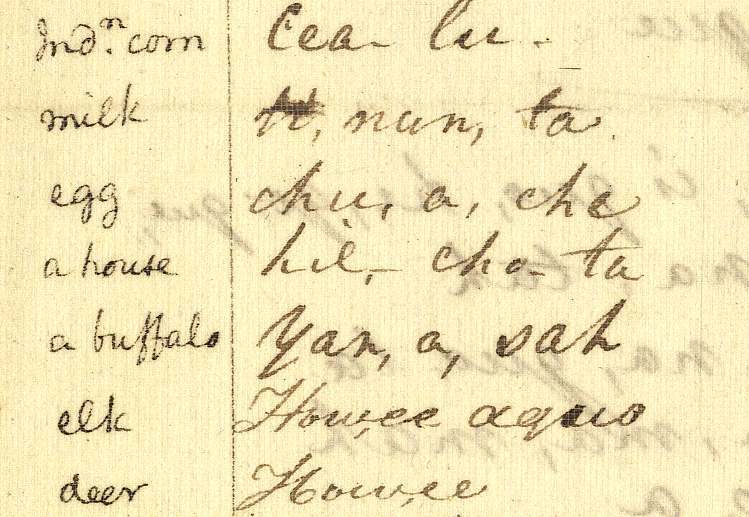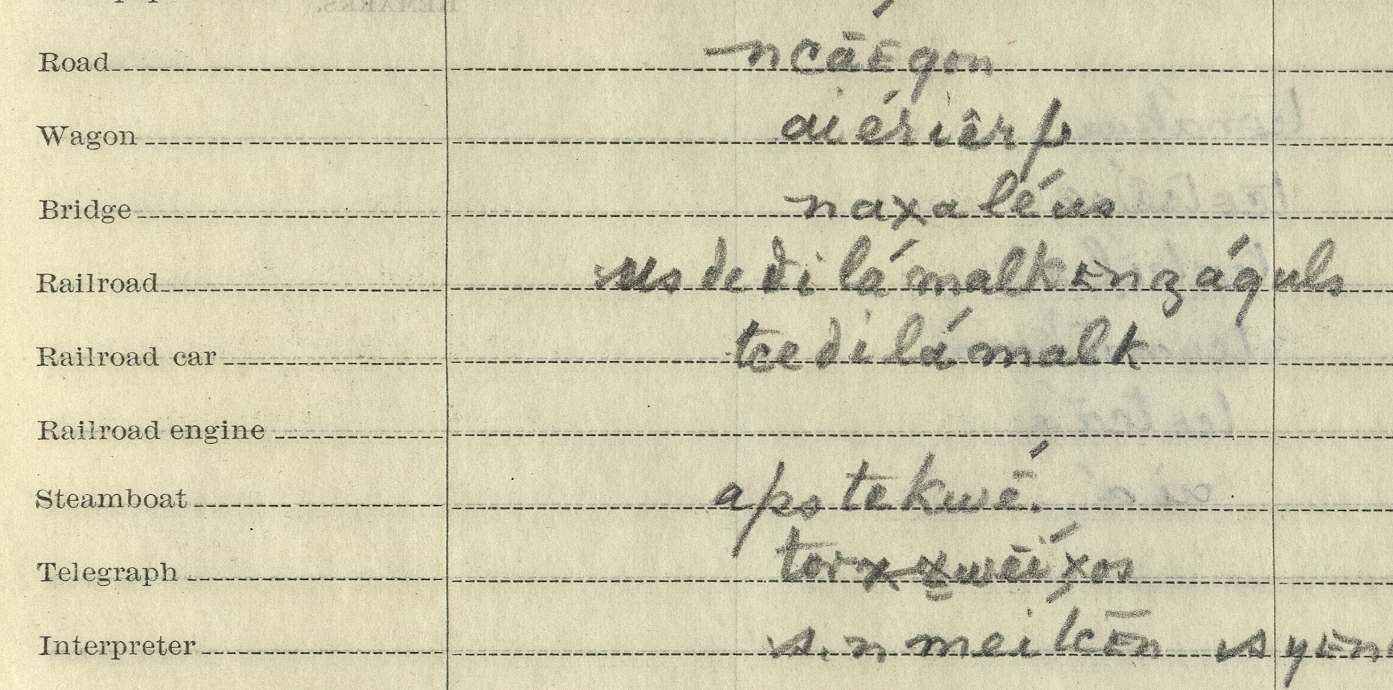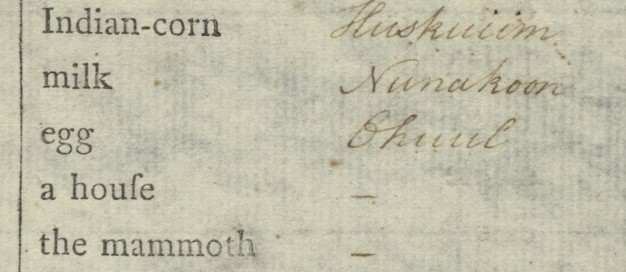From "Mammoth" to "Refrigerator": A Look at Indigenous Vocabulary Lists (Part 1)
Word lists of Indigenous languages are a very common form of documentation among the APS’s archival collections. At first look, these lists seem like the most straightforward method of writing down language information. What could be simpler? However, taking a closer look at how these lists are composed reveals a great deal about the assumptions and intentions of the people who compiled them.
Following his 1791 recording of a vocabulary of the Unquachog language on Long Island from three unnamed speakers, Thomas Jefferson created a broadside with 272 English terms listed on it. He supposed there would also be equivalent terms for these words in other human languages, especially in the Indigenous languages of North America. He sent these out to a variety of people he thought would be in touch with Native peoples, such as diplomats, missionaries, and military officials, so that he could then obtain data on numerous languages, compare them, and ultimately test out his theories on the history and relationships among the continent’s Indigenous peoples. Such information, he wrote, would be “the best proof of the affinity of nations which could be produced.” This data also served a dual purpose as military intelligence, used to ascertain which tribes were related through similarity of vocabulary, and thereby allowing Jefferson to speculate which tribes were more likely to resist or accede to the United States’ expansionist policies.

Though it aims for universality, this list betrays some fixations particular to Jefferson, as well as assumptions rooted in western European languages. In the list’s section detailing North American animals, Jefferson includes “the mammoth.” This reflects his particular fascination with megafauna, but also the expectation of his era that a species could not become extinct.
He held out hope that a list would be sent to him containing an Indigenous term for “mammoth.” However, in the place this term should appear within his comparative vocabularies manuscript, which he assembled from the many forms sent back to him, we see that this term in the list (between “a house” and “buffalo” on the printed form) is skipped entirely. He appears to have dropped the effort in a handwritten list he sent to David Campbell in 1800, who then filled in Cherokee language terms, again from speakers whom he did not name.

The list also shows some assumptions regarding grammar. For example, the verbs are listed in the form of infinitives: “to laugh; to cry; to sing; to whistle,” and so on. In many European languages, the infinitive form serves as a free-standing plain verb form and often serves as the dictionary entry form. However, this is not the case in many other world languages. In some, for example, the infinitive form does not even exist. Additionally, many Indigenous languages of North America are polysynthetic, meaning that phrases and sentences contain pieces (or morphemes) with distinct meanings that can only function grammatically within larger constructions, unlike their equivalent terms in English that are free-standing words. This incongruity runs through the information sent back on Jefferson’s form, with some purportedly equivalent terms actually being different forms or more specific phrases.

In part two of this series, we’ll look at lists from the late-19th to mid-20th centuries. Some retain their fundamental purpose as tools for acquiring information on Indigenous peoples as objects of study, even as they broaden their terms to include more meaningful aspects of everyday life and increasingly account for both grammatical complexities and different conceptions of kinship. Yet others, such as those recorded by Indigenous individuals from other speakers, show a shift in the purpose of word-gathering—moving away from predetermined research goals towards the purpose of documenting language as a part of lived experience to be carried forward.


